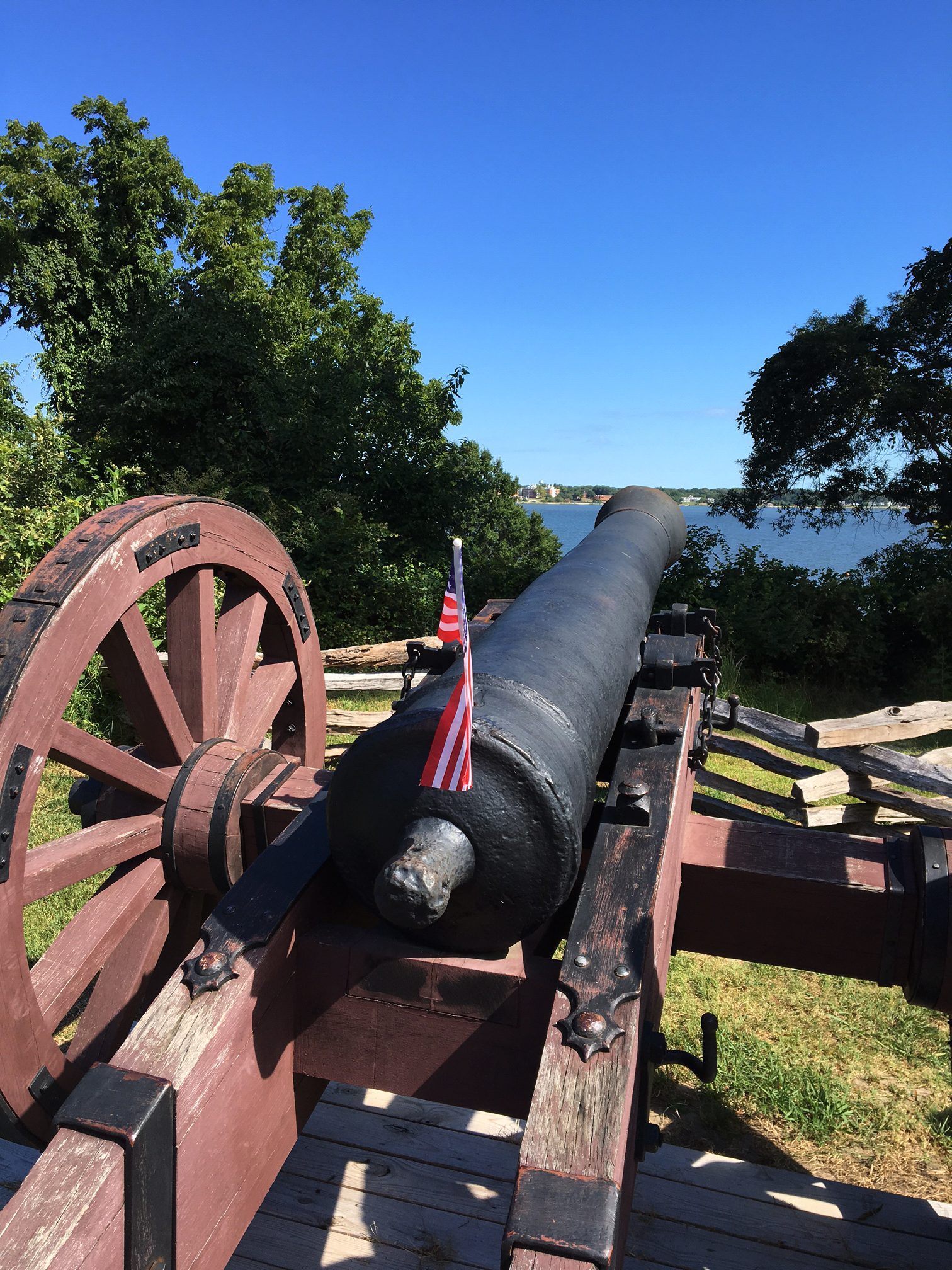
The National Park Service’s Yorktown Battlefield is a great stop in the historic triangle. (Cheryl Welch | Travel Beat Magazine)
The war between the Colonies and Mother England had not been going well for Colonel George Washington.
After years of battles, morale waned among troops and colonists. Patriot spirit started to run a bit low.
Washington felt it ebbing.
He knew Corwallis had taken up court in the sleepy little village of Yorktown along the York River. He also knew that he could never defeat the British in New York City as they’d thoroughly secured it from the patriots.
So what did he do?
He called upon his French allies, who’d just recently agreed to officially recognize the colonies’ sovereignty and to openly support their efforts. Admiral Rochambeau, who commanded a fleet in the West Indies, agreed to join forces for a period of time.
“Washington was seen jumping….” recounts one of several enthusiastic National Park Service rangers, who give rousing tours at Historic Yorktown Battlefield.
Then Washington set out to pull off the greatest deception in the history of the young colonies: Convince Cornwallis and other British commanders that Washington and his Army marched toward New York for a one-and-for-all battle.
He signed troop movement orders and allowed them to fall into enemy hands. He had phony encampments set up along the route to New York to make it appear the troops had started congregating.

Get an up-close look at the battlefield where arguably the Revolution was won. (Cheryl Welch | Travel Beat Magazine)
By the time the British figured out what was happening, it was too late for Corwallis to do much. He ordered in the British fleets to the harbor to help pound the Colonial Army from the riverbanks. Those ships, met by the French fleet, took the worst of the volley and retreated for repairs.
Meanwhile, the colonists had superior firepower, and blasted the fort and encampment day and night. The ground troops advanced toward Yorktown, one trench at a time, until they overcame the British.
A storm prevented the British from retreating by water, and Cornwallis, who claimed he’d taken ill, assigned one of his underlings to surrender on his behalf.
After learning about this decisive victory, visitors should then drive or walk to neighboring historic Yorktown, where there are shops, restaurants and historical homes preserved along the waterfront.

Yorktown Victory Center has a living history component of a first-class museum. (Cheryl Welch | Travel Beat Magazine)
Next, head over to the Yorktown Victory Center to check out what it might have felt like to live in Yorktown during the war.
Actors in period dress share with visitors how they live on the farm and what they do during drills at the Colonial encampment.
The Center’s exhibition and living history areas are set to open in the fall of 2016, and they’ll surely make for an enriching experience.
The two sites, the National Park and the Yorktown Victory Center, are separate yet complement one another nicely to get the full picture of why Yorktown is a big piece of American history.
And, Washington, deception well played, good sir, well played.
(Note: To explore these Yorktown attractions, plan to spend about three hours. Both sites have museums, restrooms and are handicap accessible.)